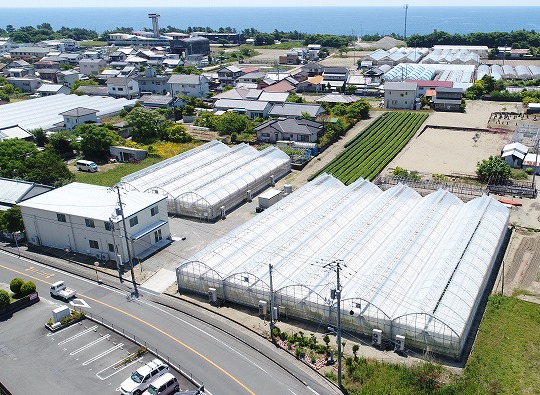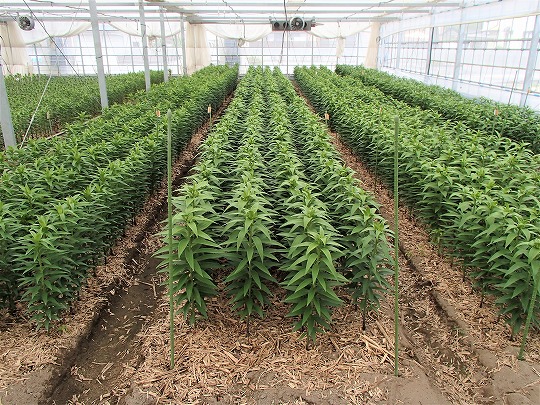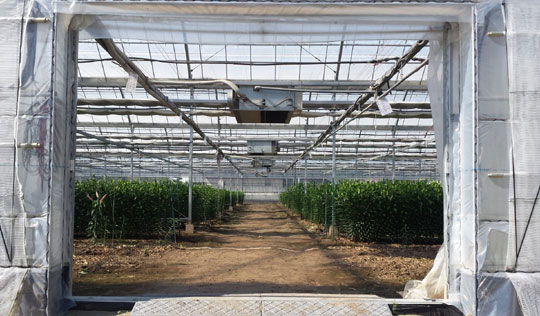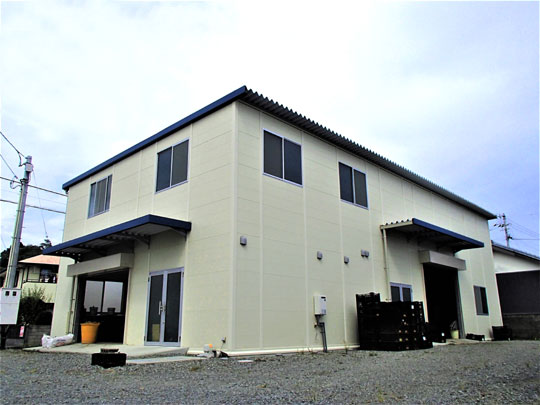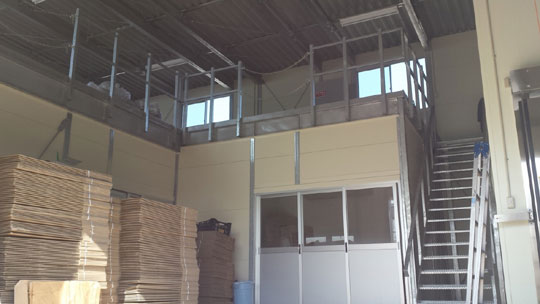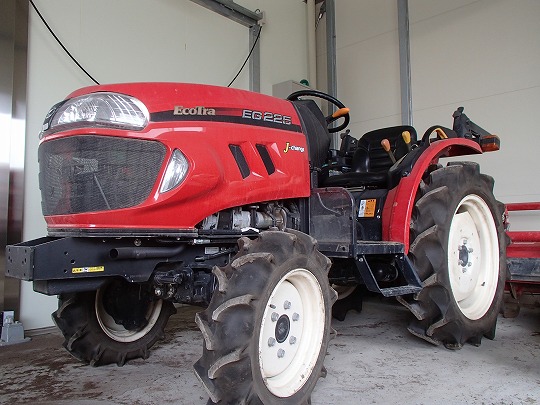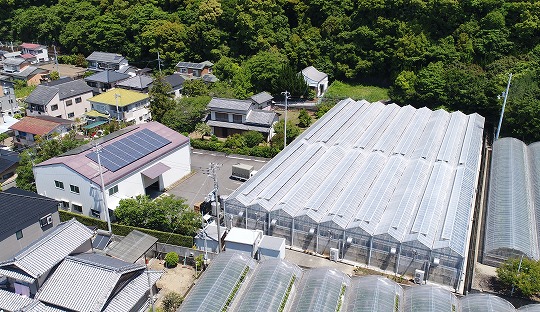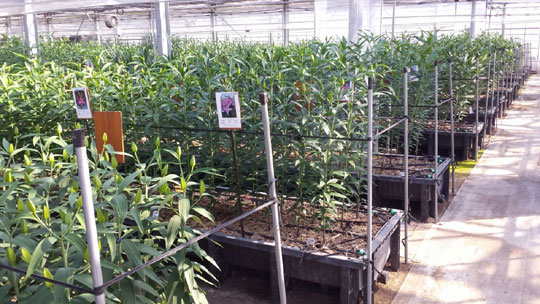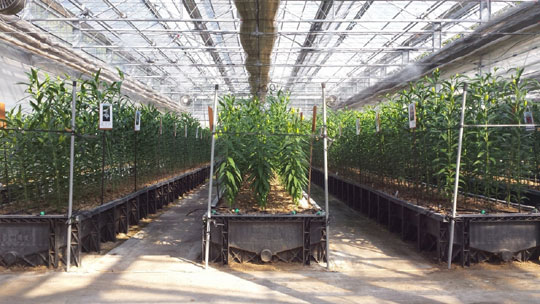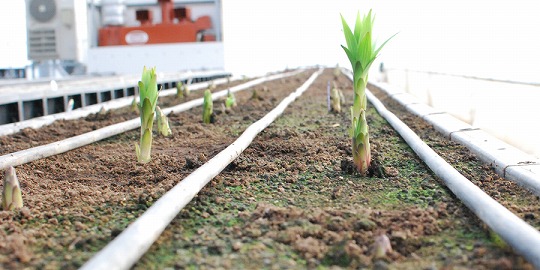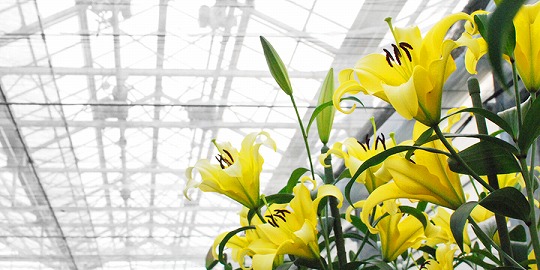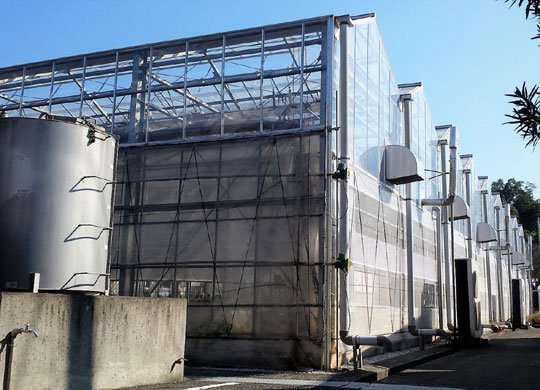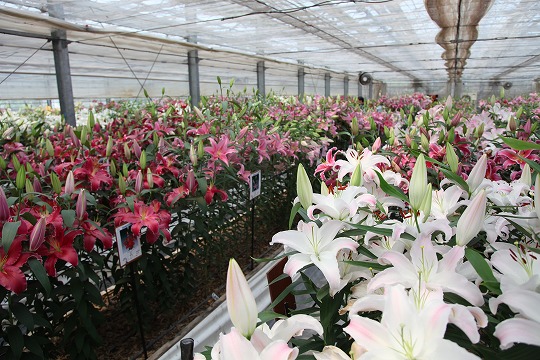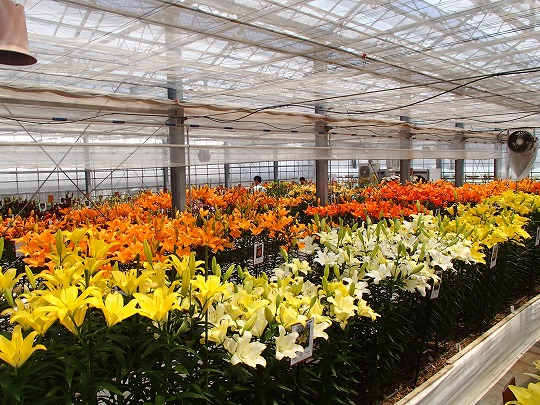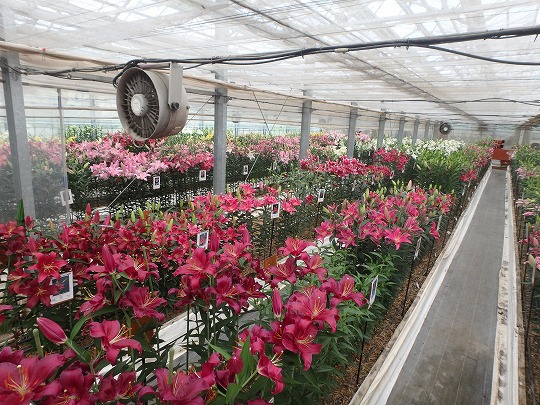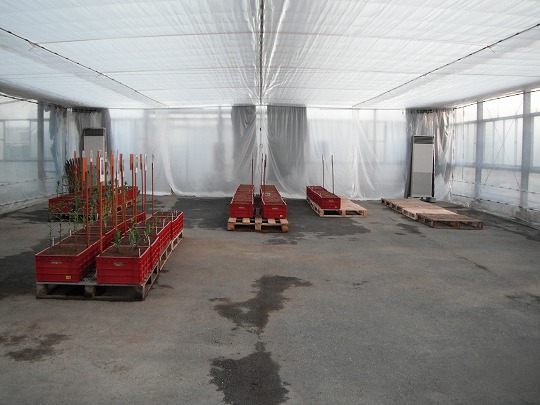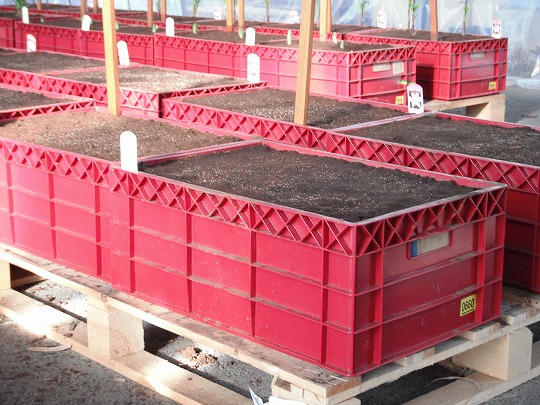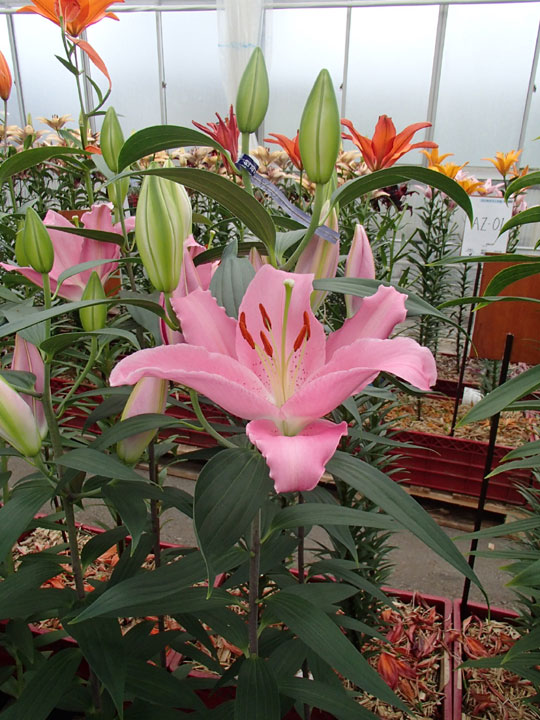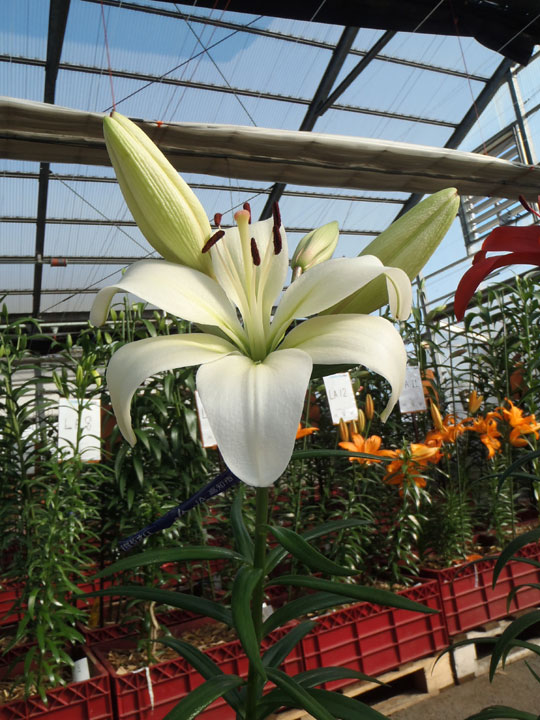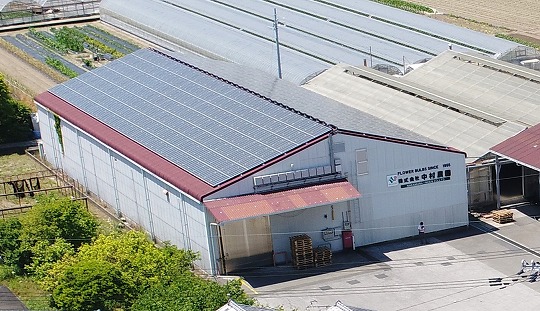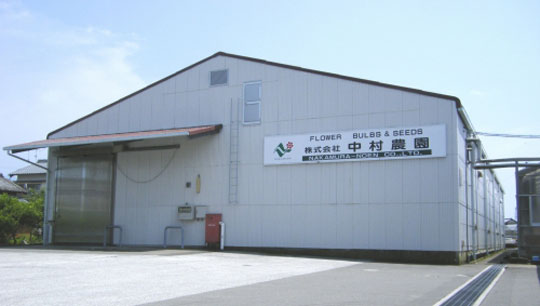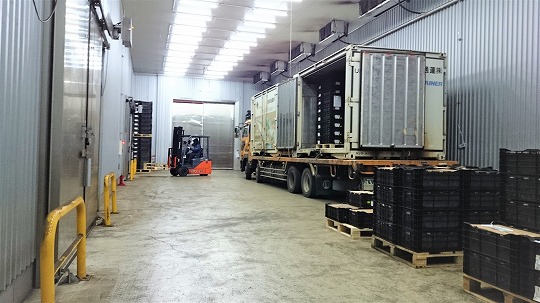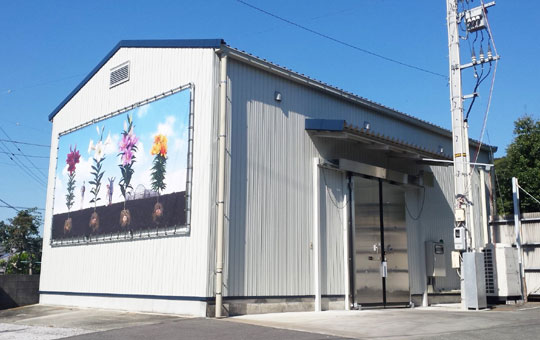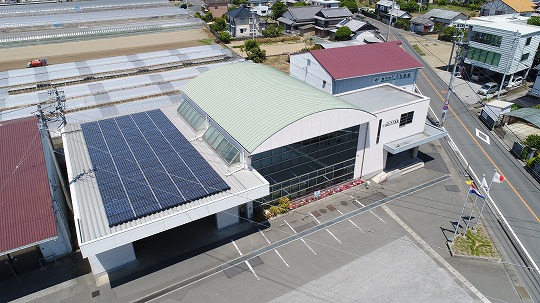Yasuhito Onishi

I was in training at the exporter, the bulb grower and the cut flower forcers every 2-3 weeks for each in Holland from 2nd of December, 2013 to 20th of February, 2014. I reported my training at the exporter and the bulb grower in the last report (“The Interim Report of Training in Holland” (January 16, 2014)), and this time, I report my training at the cut flower forcers.
【Weather】
As I already reported last time, this winter was very warm in Holland. From January to 20th of February, temperature was around 10℃ and it was warmer than in Japan.
The shortest sunshine hours was 7 hours 31 minutes (sunrise 8:54am ~ sunset 4:25pm), and finally it became 10 hours 7 minutes (sunrise 7:50am ~ sunset 5:57pm) on 20th of February, 2014. Sunshine hours got longer and longer day by day but it was not blessed with sunny days.
【At OR cut flower forcer : January 5- 22, 2014】
learned harvest and planting of OR at Qualily, the cut flower forcer Mr. John Van Ruyven. They handle 5 varieties, Universe, Santander, Sorbonne, Dynamite and Aranal. The number of production is about 2 million a year, their greenhouse’s acreage is 2.1 ha, and the cultivation method is box.
They do pre-rooting for 2 weeks anytime of the year, but they don’t use rooting-stocker and the temperature of cooling storage is quite low, about 6-7℃. They keep such a low temperature because sprouts don’t reach to an upper box. Using light for 16 hours with 2,500 lux from the fourth week and 5,000 lux from the sixth weeks after planting. Each process of planting is almost mechanized, for example, to cover peat moss or to pile up boxes, so only doing by hand was to plant bulbs on the box. 25,000 bulbs were planted in 1 day by only 3 people, just put the bulbs. They disinfect boxes of stack on pallets with steam in the special large room. Flowers they harvested are carried by belt conveyor to the sorting place.
I was surprised that agriculture in Holland was mechanized more than I have ever heard. However, this box cultivation takes a high cost and it doesn’t pay if they don’t handle expensive variety like OR. Also, I heard that some forcer has contract with other forcers to disinfect or plant.

[photo] left: The room for photography They use photos which were taken in this room for the market or HomePage of Qualily.
[photo] right: The machine of line and collecting boxes
【At LA/A cut flower forcer : January 28- February 14, 2014】
I learned harvest and planting of LA/A at Qualily, the cut flower forcer Mr. Ruud vander Hoeven. They handle 9 varieties, Litouwen, Brindisi, Marianne Timmer, Nashville, South Point, Heraklion, Honesty, Puma and Salmon Classic. Production of bulbs of orange variety is small, so they grow five varieties to ship year-round. The number of production is about 4.8 million a year, their greenhouse’s acreage is 2.4 ha, and the cultivation method is soil culture.
They plant by a shovel, not using machine. I also used a shovel, sometimes planted about 30,000 pcs a day with 7 people, I suffered from a muscle pain or a blister in my hands. Then, I stretched every day and got over it. In addition, I sometimes hurt my fingers when I pulled out a flower and cut a stem with a knife. Through this training, I realized that the flower forcers’ work is severe than my easy thought.
The flower price in Holland is much changeable by the time of event or anniversary using flowers in Europe. I was so surprised Marianne Timmer became double price on the day before St. Valentine’s Day. Forcers in Holland think it’s important to ship flower at high price time.

[photo] left:Harvest
[photo] right: Planting
What I was surprised most was not technique or mechanized facilities but their management. They precisely count every cost like bulb, fertilizer, labor cost, electricity, land, loan of the greenhouse. Mr. John and Mr. Ruud were independent forcer but they run together as one company since this year. The biggest reason is that it is easy to promote for customers if they sell many varieties of OR/OT and LA/A.
In Holland, shipping time and quantity are important because they can control the stable quality year-round by machine or facility in circumstance with low sunshine, humidity and temperature.
Then, what should we do for Japanese flower industry? I am still on the way to figure it out, so I’d like to listen to your thought as a forcer when we meet at our Lily Festa.
We put the focus on consumption of flowers in Lily Festa this year, and it is for all of people in flower industry. We plan something different from before, like demonstration of flower arrangement and so on. I have strong feeling about flower because I grew up with so many flowers as a son of a flower shop. Our Lily Festa is yearly event which forcers in all part of Japan come together. We’d like to listen to your idea of lily also for flowers, and we hope forcers, sellers, all of people in flower industry exchange opinion. Please come and see our Lily Festa!! We are looking forward to seeing you there!



